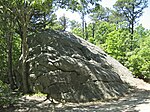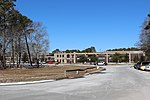Coast Guard Beach (Eastham, Massachusetts)
Coast Guard Beach is part of the Cape Cod National Seashore in Eastham, Massachusetts. From mid-June to Labor Day, the parking area at this location is closed to all but park staff and visitors who are disabled, and access is provided by shuttle bus from the Little Creek parking area (across from the Doane Area). Although the parking lot at Coast Guard Beach is open the remainder of the year, parking is limited. There are seasonal restrooms and a wheelchair-accessible rampway to the beach. Coast Guard Beach is popular among locals and tourists for surfing and boogie boarding. It is one of five Cape Cod National Seashore beaches that are on the ocean side of the Cape, generally providing a better surf than beaches on the bay side. Low tide exposes a fairly flat stretch of beach, making it also popular for skimboarding.
Excerpt from the Wikipedia article Coast Guard Beach (Eastham, Massachusetts) (License: CC BY-SA 3.0, Authors).Coast Guard Beach (Eastham, Massachusetts)
Doane Road,
Geographical coordinates (GPS) Address Nearby Places Show on map
Geographical coordinates (GPS)
| Latitude | Longitude |
|---|---|
| N 41.843055555556 ° | E -69.945277777778 ° |
Address
Doane Road
02642
Massachusetts, United States
Open on Google Maps










